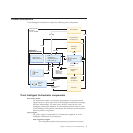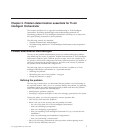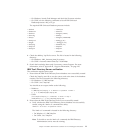from each managed application environment in the data center. It
captures and filters data from the application, operating system,
and infrastructure layers and communicates the data to other
components.
objective
analyzer
This component determines the resource requirements of each
application, and identifies trends and peaks in resource use. Each
managed application environment has an associated objective
analyzer.
global resource manager
This component receives requirements for servers or network
devices from all the objective analyzers, and manages the overall
optimization. It has two primary responsibilities: making optimal
resource allocation decisions, and maintaining a stable application
infrastructure. By considering the different server requirements for
each application environment, it determines where to allocate
resources.
deployment
engine
The deployment engine is responsible for automated provisioning. It
creates, stores, and runs workflows and communicates their success or
failure in performing an operation. Workflows can be triggered by
commands from an administrator, by external tools that send SOAP
commands to Tivoli Intelligent Orchestrator, or by recommendations from
the policy engine.
automation
packages
An automation package is a collection of workflows, scripts, and other
commands and tools that apply to the operation of a specific type of
software component or a physical device. The deployment engine manages
the deployment of workflows and associated workflow components in an
automation package.
discovery technologies
A discovery technology is an application that performs configuration
change detection. For example Tivoli NetView can discover new hardware
that is added to the data center and is not defined in the data center
model. For hardware that is already defined in the data center model, it
can also identify configuration changes that occur outside of Tivoli
Intelligent Orchestrator.
management interface
Tivoli Intelligent Orchestrator has two management interfaces: a Web
interface, and a command-line interface. The Web interface provides a
graphical representation of the data center, includes wizards to simplify
configuration, and offers features such as reporting and task status
monitoring that are not available from the command-line interface. The
command-line interface provides access to Tivoli Intelligent Orchestrator
features with SOAP. Administrators have the flexibility to perform tasks
such as creating scripts that run specific SOAP commands or setting up
external tools to send SOAP commands in response to an event.
Prerequisites installed with Tivoli Intelligent Orchestrator
Tivoli Intelligent Orchestrator interacts with other components that are installed
with it.
4 Tivoli Intelligent Orchestrator Problem Determination and Troubleshooting Guide


















